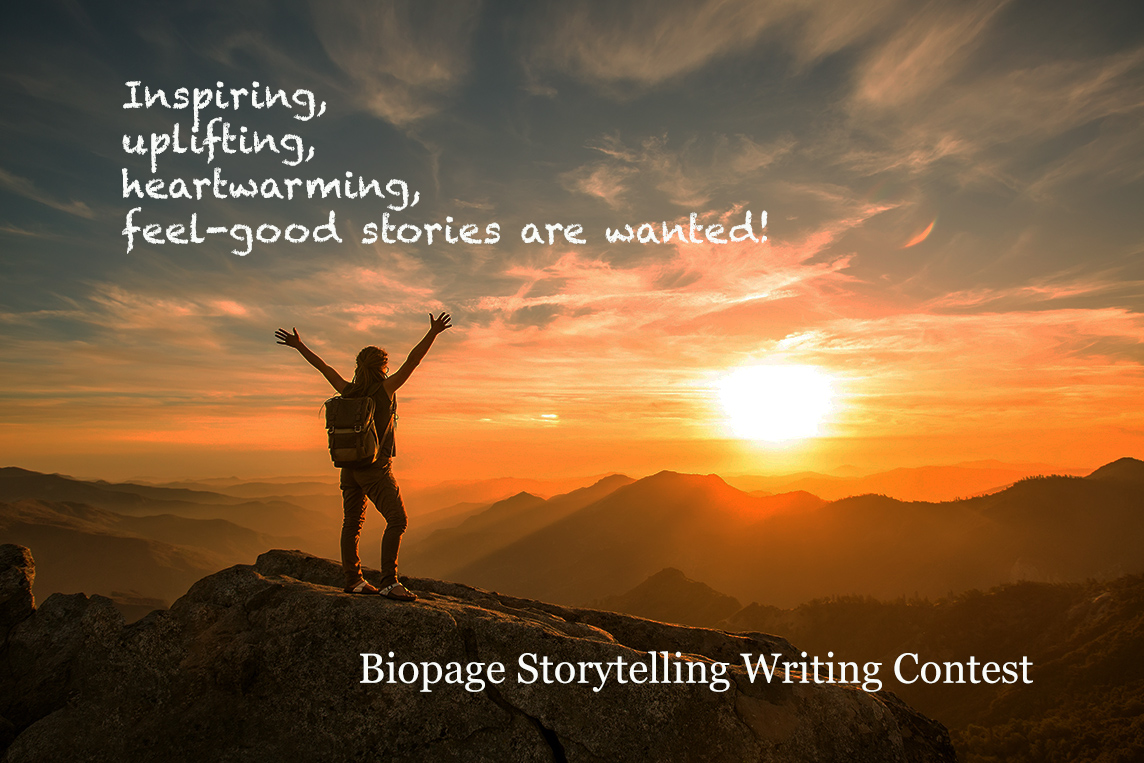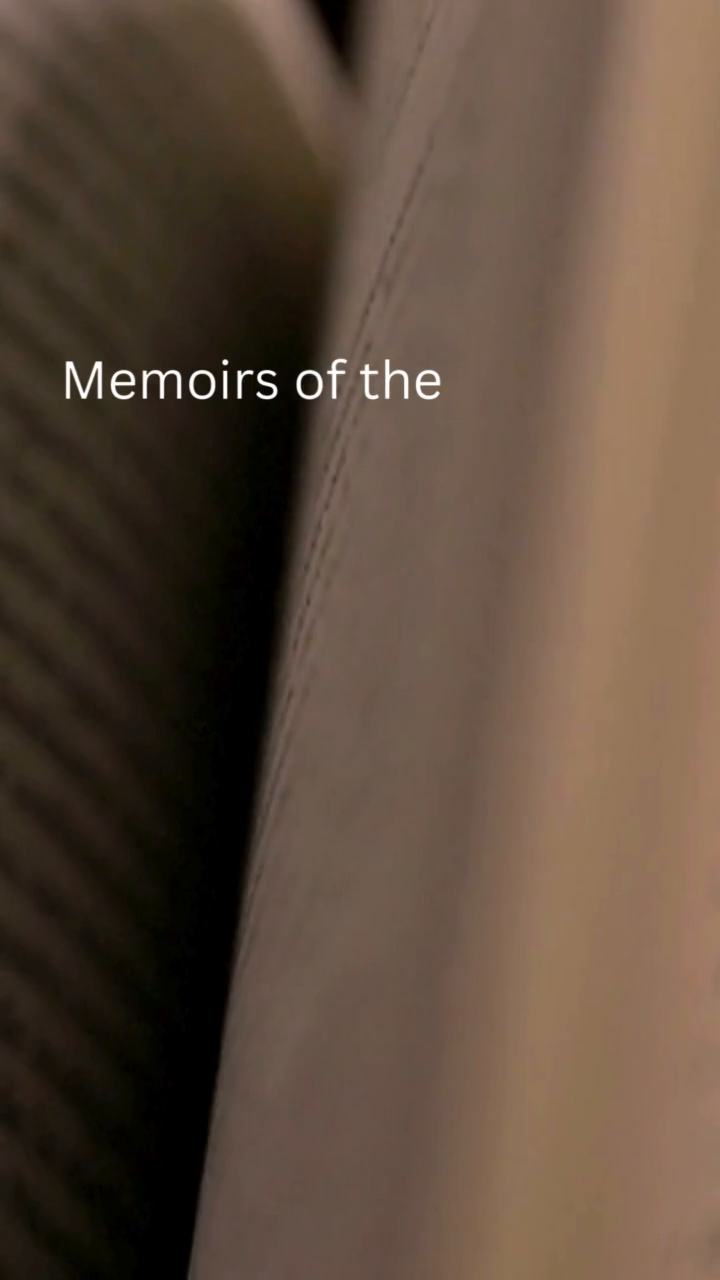A Pharma Expo in India is a premier platform that brings together professionals, manufacturers, and innovators from the pharmaceutical and healthcare industries. These expos showcase the latest advancements in pharma machinery, packaging, formulations, and technology, offering valuable networking and business opportunities. Exhibitors and visitors gain insights into current market trends, innovations, and regulatory developments shaping the future of the pharma sector. Events like the Indian Fharma Fair play a vital role in promoting collaboration and knowledge exchange within the industry. Attending a Pharma Expo in India helps businesses explore partnerships, discover new products, and expand their market reach. It's a must-visit event for anyone involved in pharmaceutical manufacturing, distribution, or research looking to stay ahead in the competitive landscape. Visit Us: https://www.indianpharmafair.com/blog/what-is-a-pharma-expo Call: +91-9971516888 Mail: indianfharmafair@gmail.com
Discover what sets a Top pharmaceutical company in India apart in this insightful infographic that highlights innovation, quality manufacturing, and trusted healthcare impact. With a focus on research-driven development, ethical standards, and global reach, the visual captures everything that defines industry excellence. Primus Pharmaceuticals exemplifies these values through world-class production facilities and a wide-ranging product portfolio. As a trusted partner for healthcare professionals, Primus Pharmaceuticals continues to play a key role in improving patient outcomes across India and beyond. Whether you're a doctor, distributor, or investor, this is your chance to understand the core strengths of a Top pharmaceutical company in India and why it stands out in a competitive market. Scroll through and see the difference quality and trust can make. Visit Us: https://www.primuspharmaceutical.com/pharmaceutical-companies-in-india/ Call: +91-9996904755 Mail: queries@primuspharmaceutical.com
Discover key details about the Upcoming Pharma Exhibitions in India 2025 in this insightful blog. Explore important dates, locations, exhibitor highlights, and how this major event is set to transform the pharmaceutical landscape. Whether you're a manufacturer, distributor, or healthcare expert, this exhibition offers powerful networking and business opportunities. Organized by Indian Fharma Fair, the event brings together top innovators and industry leaders. Stay informed about the trends and technologies shaping the future. If you're looking to grow in the pharma sector, don't miss the Upcoming Pharma Exhibitions in India 2025 — your gateway to progress and partnerships. Visit Us: https://www.indianpharmafair.com/blog/what-is-the-upcoming-pharma-exhibition-in-india-2025 Call: +91-9971516888 Mail: indianfharmafair@gmail.com
Find out why veterinary PCD pharma franchise is an attractive choice of investment- with the assistance of Pharma Heights! The animal health sector has booming opportunities, low barrier to entry and scalable business opportunities, which is highlighted in our authoritative blog. At Pharma Heights, which is backed by the best veterinary formulations, end-to-end marketing operations, and transparent pricing, we are the only company to offer end-to-end marketing support. This is a business idea that can be appealing not only to new but also to experienced entrepreneurs due to special knowledge about veterinary drug demand, quicker ROI, and protection of the territory. Take a closer look to find out how you can use trusted Pharma Heights brand, high-quality products, and business experience to establish a long-term and profitable business in veterinary healthcare. Visit Us: https://www.pharmaheights.com/blog/why-to-invest-in-veterinary-pcd-pharma-franchise Call: +91-9996021308 Mail: info@pharmaheights.com
A pharmaceutical company is a business that researches, develops, manufactures, and markets medicines for human or animal health. These companies produce prescription medicines, vaccines, and over-the-counter medications. They play a vital role in improving public health by creating treatments for various diseases, ensuring safety, effectiveness, and regulatory compliance in their products. Primus Pharmaceuticals Industries is one of the top pharmaceutical company in India, known for its high-quality generic medicines and specialty pharmaceuticals. With a strong global presence, it offers treatments across various therapeutic areas. Primus Pharmaceuticals focuses on innovation, research, and affordability to improve healthcare outcomes worldwide. Visit Us: https://www.primuspharmaceutical.com/pharmaceutical-companies-in-india/ Call: +91-8708414850 Mail: info@primuspharmaceutical.com
Gynopolis is a trusted company in gyno pharmaceuticals, offering safe and effective medicines for women's health. We provide tablets, capsules, and other products made in quality-approved facilities. Our aim is to support better healthcare for women with reliable solutions. Get in touch with Gynopolis to grow your business in gyno pharmaceuticals. https://gynopolis.in/
Looking to enter the pharmaceutical business? Discover everything you need to know about starting with a General Medicine PCD Pharma Company in this insightful blog by Primus Pharmaceuticals. Learn how the PCD model works, key benefits, market potential, and what sets a reliable pharma partner apart. Whether you're a medical professional, entrepreneur, or investor, this guide offers valuable tips to help you launch and grow your own pharma venture. Start your journey with the right knowledge and choose a trusted General Medicine PCD Pharma Company. Read now and take the first step toward success in the Indian pharmaceutical market! Visit Us: https://www.primuspharmaceutical.com/general-medicine-pcd-pharma-company-need-to-know/ Call: +91-8708414850 Mail: info@primuspharmaceutical.com
Azithromycin, often sold under brand names like Zithromax and Zmax, is a widely prescribed antibiotic belonging to the macrolide class. It's a powerful tool for fighting bacterial infections in different parts of the body. Let's delve deeper into its uses, dosage, and potential side effects. Combating Bacterial Infections Azithromycin targets a specific bacterial function, preventing them from multiplying and ultimately eliminating the infection. It's commonly used to treat: Respiratory infections: Azithromycin is effective against bronchitis, pneumonia, and some sinus infections caused by bacteria. Ear infections: It can treat middle ear infections (otitis media) in children and adults. Skin infections: Azithromycin can address bacterial skin infections like impetigo and cellulitis. Sexually transmitted infections (STIs): In some cases, it's used to treat certain STIs like chlamydia and gonorrhea. Understanding Dosage Azithromycin comes in various forms, including tablets, capsules, liquids, and chewable tablets. The dosage depends on several factors: Age: Dosage varies between adults and children. Severity of infection: The doctor determines the appropriate dosage based on the severity of the infection. Type of infection: The specific infection being treated also influences the dosage. Common Dosage Regimens Adults: A typical course for many infections involves taking 500mg once daily for 3-5 days. Some infections may require a longer duration. Children: Dosage for children is calculated based on their weight. It's usually administered as a single daily dose or divided doses over several days. Always follow your doctor's instructions precisely regarding dosage, frequency, and duration of taking Azithromycin. Never adjust the dosage yourself, and complete the entire course of medication as prescribed, even if you start feeling better. Stopping the medication early can allow the bacteria to become resistant to the antibiotic. Potential Side Effects Like all medications, Azithromycin can cause side effects, although not everyone experiences them. Here are some common ones: Nausea, vomiting, or diarrhea: These are the most frequent side effects. Taking the medication with food might help reduce these. Stomach pain or cramping: This can occur, especially if taken on an empty stomach. Headache: Headaches are a relatively common side effect. Over-the-counter pain relievers can usually provide relief (consult your doctor first). Vaginal yeast infection: Azithromycin can disrupt the natural balance of bacteria in the vagina, potentially leading to a yeast infection. Serious Side Effects (Seek immediate medical attention) Severe allergic reactions: Symptoms like difficulty breathing, rash, hives, or swelling of the face, lips, or tongue require immediate medical attention. Severe stomach pain or diarrhea: This could be a sign of a serious condition called pseudomembranous colitis. Important Considerations Inform your doctor about any allergies you have, including allergies to other antibiotics, before starting Azithromycin. Disclose all medications you are taking, including prescription drugs, over-the-counter medications, and herbal supplements. Azithromycin can interact with certain medications. Azithromycin can interact with some foods and drinks, such as grapefruit juice. Ask your doctor about any dietary restrictions while taking this medication. Azithromycin can increase sun sensitivity. Use sunscreen with SPF 30 or higher and wear protective clothing while outdoors. Azithromycin and COVID-19 While Azithromycin is not effective against viruses like COVID-19, some studies are investigating its potential role in combination with other therapies. However, this use is still under research, and Azithromycin should not be used for self-treating COVID-19. Conclusion Azithromycin is a valuable antibiotic for treating various bacterial infections. However, it's crucial to use it as prescribed by your doctor and be aware of potential side effects. Open communication with your doctor is essential to ensure safe and effective use of this medication. for more info visit : https://www.dosepharmacy.com/azee-500mg-tablet
Introduction: Understanding Muscle Pain Muscle pain is a common ailment that affects millions of individuals worldwide. Whether it's from intense physical activity, poor posture, or underlying health conditions, muscle discomfort can significantly impact one's quality of life. From the occasional twinge to chronic soreness, finding relief from muscle pain is a top priority for many. Prosoma 500mg contains carisoprodol, the active ingredient of a medication. It works on the principle of muscle relaxation and hence falls under the major category of muscle relaxant medicines. Prosoma works by blocking pain sensations between the nerves and the brain, thereby helping to relax muscles and alleviate pain. This helps to reduce the sensation of pain and allows the muscles to relax. Exploring Traditional Remedies Traditionally, individuals have relied on over-the-counter medications and topical creams to manage muscle pain. While these methods can provide temporary relief, they often come with side effects and may not address the root cause of the discomfort. Moreover, long-term use of medications can lead to dependency and other health concerns. The Rise of Innovative Solutions In recent years, there has been a surge in innovative approaches to alleviate muscle discomfort. These approaches focus on holistic healing, targeting not just the symptoms but also the underlying issues causing the pain. From cutting-edge technology to ancient healing practices, these solutions offer promising results for those seeking long-term relief. Carisol 350mg takes centre stage in alleviating issues like low back pain due to strains, sprains, and other common muscle injuries. Its potent formulation that is Carisoprodol also known as the active ingredient, targets the root causes of pain, offering a comprehensive solution for individuals seeking respite from diverse musculoskeletal challenges. Carisoprodol is used together with rest and physical therapy to treat skeletal muscle conditions such as pain or injury. 1. Targeted Exercise Regimens Exercise is not just beneficial for overall health; it can also play a significant role in managing muscle pain. Targeted exercise regimens, such as yoga, Pilates, and physical therapy, can help strengthen muscles, improve flexibility, and reduce tension. By addressing muscle imbalances and promoting proper alignment, these exercises can alleviate discomfort and prevent future injuries. 2. Mind-Body Techniques The mind-body connection is a powerful tool in pain management. Techniques such as meditation, deep breathing exercises, and mindfulness can help individuals relax tense muscles and reduce stress levels. By fostering a sense of calm and relaxation, these practices can alleviate muscle pain and promote overall well-being. 3. Alternative Therapies Alternative therapies offer unique approaches to treating muscle discomfort. Modalities such as acupuncture, massage therapy, and chiropractic care focus on restoring balance to the body's energy systems and promoting natural healing. By targeting specific pressure points and releasing tension, these therapies can provide relief from muscle pain and improve overall mobility. Conclusion: Embracing Innovation for Pain-Free Living Innovative approaches to alleviating muscle discomfort offer hope for those seeking relief beyond traditional remedies. By incorporating targeted exercises, mind-body techniques, and alternative therapies into their routine, individuals can take proactive steps towards pain-free living. By embracing innovation and exploring new possibilities, we can empower ourselves to overcome muscle pain and live our lives to the fullest. Visit - https://lifecarepills.com/carisol-350mg/ Visit - https://lifecarepills.com/prosoma-500mg/
Mechanism of Action: Neurotransmitter Modulation: Both doses reduce the release of neurotransmitters involved in pain signaling. Central Nervous System Effects: By affecting the central nervous system, Pregabalin decreases the overall pain perception. Pain Reduction: Pregalin 50mg: Provides adequate pain relief for less severe cases, allowing patients to perform daily activities with minimal discomfort. Pregabalin 75mg: Offers significant pain relief for more severe cases, helping patients with higher pain levels achieve better pain control. Titration and Tailoring: Gradual Increase: Starting with 50mg and potentially moving to 75mg allows for individualized treatment plans. Optimal Dosage: Finding the optimal dosage ensures maximum pain relief with the least side effects. Comparison and Practical Insights Efficacy: Pregalin 50mg: Suitable for mild to moderate pain, providing a good starting point. Pregabalin 75mg: More effective for moderate to severe pain, used when lower doses are insufficient. Side Effects: Pregalin 50mg: Lower incidence and severity of side effects, making it ideal for initial treatment. Pregabalin 75mg: Higher incidence of side effects due to the increased dosage, requiring careful monitoring. Patient Tolerance: Pregalin 50mg: Better for new patients and those needing a lower starting dose. Pregabalin 75mg: Suitable for patients who have adjusted to lower doses and require more effective pain management. Managing Chronic Pain: Practical Approach Start Low, Go Slow: Begin with Pregalin 50mg to assess tolerance and response. Gradually increase the dose based on patient needs and pain levels. Monitor and Adjust: Regular monitoring for effectiveness and side effects. Adjust dosage as needed, potentially moving to Pregabalin 75mg for more severe pain. Patient Education: Educate patients about potential side effects and the importance of adherence. Encourage reporting of any severe or unusual side effects. Combination Therapy: Consider combining Pregabalin with other pain management strategies, such as physical therapy or other medications, for comprehensive pain management. Long-Term Management: Regular follow-ups to adjust dosage and ensure effective pain control. Evaluate the need for continued medication versus alternative treatments as the patient's condition evolves. Conclusion Pregalin 50mg and Pregabalin 75mg are effective solutions for managing chronic pain, each suited to different levels of pain severity and patient needs. Pregalin 50mg is ideal for initial treatment and mild to moderate pain, offering a lower risk of side effects. Pregabalin 75mg is suitable for more severe pain and long-term management, providing enhanced pain relief but requiring careful monitoring. Always consult with a healthcare provider to determine the most appropriate dosage and treatment plan for individual patient needs. visit : https://healthcurepills.com/product/pregalin-50mg-pregabalin/
What is the future going to be like? Is there going to be flying cars, maybe advanced technology? Thinking of 2020 in the past seemed like such a far away place, almost unattainable. We were so sure that by now as a society, there would be a noticeable advancement and peace. What we got instead was sensationalism and fear. In the start of the year all was well, and an overall sense of change was amongst us all. Twenty-Twenty, sounded like such a big year, an imposing yet exciting new change to daily life. Unbeknownst to the public, our troubles were already here. They were lying in wait, dormant almost. Sitting in the previous year we were so eager to leave behind. As it turns out, there were already signs of the virus back in September and October. But these results were deemed an unnecessary worry. How do I know this information? I am currently a Respiratory Therapy student. I was doing clinical hours fervently in several different hospitals each term. I witnessed the progression from a calm, and even joking demeanor. To a worried and stressed disposition from my soon to be peers. My own family took to the craze and even the most sensible soon lost their nerve. My aunt, who is currently a Respiratory Therapist, took the brunt of the news. She received daily updates that she relayed to me. Including the news regarding the fact that Covid-19, was already on the radar back in 2019. Regardless of that, not even my preceptors (Clinical teachers) saw this coming. I quickly went from attending campus and my hospital site, to being at home 24/7. I received a call late one night from my aunt saying " you're not going to school anymore". Confused and alarmed, my only thought was she was kicking me out of school. The school was still sending students to hospitals despite quarantine. The school took the initial thought that every healthcare worker had "its not a big deal". To healthcare workers, we see outbreaks all the time, and live in a different world than the public. My aunt had contacted the school and told them I wouldn't be going to the hospital. Due to the fact that we had my 70 year old grandma at home, who was susceptible to the virus. I felt she was overreacting, but was glad to have a break. Respiratory Therapist's are currently at the forefront of this virus. However the minimum work hours consist of 12 hour shifts 3 times a week. The hours are long and require the entirety of our focus to provide optimal care. Because of this, sometimes our work sabotages our relationships. This is where work becomes our home and co-workers become our family. The last 2 days at my hospital site were spent sitting in the department. Even our preceptors were worried to send us out with them and let us study in silence. This silence had me reflecting on the current events. I worried about one of my preceptors, who had before the flights stopped, left for Italy. I also thought of my aunt, my reason for joining, still being at the epicenter. Almost everyone in my household is at risk for the virus except for my brother. My grandmother and uncle in age, my mother with VA appointments, and my aunt in exposure. In addition to missing out on valuable hands on experience, I also lost my part time job. I worked as a parking supervisor for events, but with no events there was no need for staff. Since all this has taken place, I had to unfortunately apply for unemployment. While the everlasting effect of this virus is very serious, I can't help but feel this pandemic turned into a media frenzy. Everyone is either afraid, indifferent, or trying to capitalize. The virus surprisingly had competition for the spotlight every month. Between giant hornets, aliens, the tiger king, earthquakes and fires, there was a lot going on. Recently, I was surrounded by two fires. One down the street from me, and another that snuck up on me in Downtown LA. The daily face mask I wore was not enough to keep out smoke inhalation. I sympathize for the 12 firefighters who were injured in the explosion. I fear that all these catastrophic events will lead to a sense of normality where there shouldn't be. In light of all these events sudden or subtle, I hope it brings a sense of unity that we all dreamed the future would have. That Advanced nature we all dreamed of, the sense of action that should've taken place. While we saw evidence that covid was coming, future pandemics are hard to predict. No one saw this coming, the public nor the healthcare workers alike. Life in quarantine may not be the best situation for everyone. But like my time in the department it is a time of reflection. Life in 2020 is not what we wanted. But it begs the question, are you where you wanted to be in life? Is this the life you saw for yourself before quarantine? It gives us the chance to have hobbies, work on ourselves and be with our families. Make the 2020 that you wanted to see possible.
They devoted their lives, may they rest in peace. We are continuing this fight against coronavirus! (Based on list on Medscape. Please contact us for corrections.) 1. Isaac Abadi, MD, 84, Internal Medicine and Rheumatology, Miami, Florida 2. Ashraf Abdo, 60, General Practitioner, New York City 3. John Abruzzo, 62, Registered Nurse, Huntington, New York 4. Divinia "Debbie" Accad, 72, Registered Nurse, Detroit, Michigan 5. Lori Alioa, 56,Healthcare Social Worker, Ann Arbor, Michigan 6. Larrice Anderson, 46, Nurse, New Orleans, Louisiana 7. Madhvi Aya, 61, Physician Assistant, Emergency Medicine, Brooklyn, New York 8. Earl Bailey, 45, Registered Nurse, Broward County, Florida 9. Jeffrey Baumbach, 57, Resident Nurse, Stockton, California 10. Andres Benitez, age unknown, Food and Nutrition Services, Teaneck, New Jersey 11. Araceli Buendia Ilagan, 63, ICU Nurse, Miami, Florida 12. Patrick Cain, 50, ICU Nurse, Flint, Michigan 13. Luis Caldera-Nieves, 63, Ob/Gyn, Miami, Florida 14. Ricardo Castaneda, 64, Psychiatrist, New York City 15. Rosary Celaya Castro-Olega, 63, Registered Nurse, Los Angeles, California 16. John Cofrancesco, 52, Nursing Home Administrator, New Jersey 17. Jeannie Danker, 60, Radiology, Columbus, Ohio 18. Daisy Doronila, age unknown, Nurse, Kearny, New Jersey 19. Raul D. Eslao, 53, Registered Nurse, Westland, Michigan 20. Lisa Ewald, 54, Nurse, Henry Ford Hospital, Detroit, Michigan 21. Jessie Ferreras, 55, Primary Care Physician, Waldwick, New Jersey 22. Chris Firlit, 37, PGY6 Oral-Maxillofacial Surgery, Detroit, Michigan 23. Clair Marie Fuqua, 28, Receptionist, Pediatrics, Pineville, Louisiana 24. Frank Gabrin, 60, Emergency Medicine Physician, New York City 25. James T. Goodrich, 73, Neurosurgeon, New York City 26. Kevin Graiani, 56, Nurse Practitioner,Garnerville, New York 27. Ali Dennis Guillermo, 44, ICU Registered Nurse, Patchogue, New York 28. Alexander Gusev, 57,Medical Technician, Reno, Nevada 29. Rose Harrison, Long-term Care Nurse, Hamilton, Alabama 30. Douglas Linn Hickok (US Army Capt), 57, Physician Assistant, East Stroudsburg, Pennsylvania 31. James House, 40, Registered Nurse, Detroit, Michigan 32. Alex Hsu, 67, Internal Medicine, Margate, Florida 33. Aleyamma John, 65, Registered Nurse, New York City 34. Kious Kelly, 48, ER Nurse, New York City 35. Kim King-Smith, 53, EKG Technician, Newark, New Jersey 36. Theresa Lococo, 68, Pediatric Nurse, Brooklyn, New York 37. Christopher David Matus, 46,Medical Examiner Investigator, Swartz Creek, Michigan 38. Rabbi Yaakov Meltzer, 60, Physician Assistant, Brooklyn, New York 39. Cynthia "Chi" Mendoza, 68,Retired Nurse and Hospital Volunteer, Norfolk, Virginia 40. William "Bill" Murdock, 63, MRI Technologist, Miami, Florida 41. John F. Murray, 92, Pulmonary and Critical Care Physician, San Francisco, California 42. Freda Ocran, 50, Psychiatric Nurse, New York City 43. Natasha Ott, 39, Social Worker, New Orleans, Louisiana 44. Tomas Pattugalan, 70, Internal Medicine Physician, Queens, New York 45. Mark Respler, 66, Urologist, Brooklyn, New York 46. Victor C. Rivera, 77, Pediatrician,Langhorne, Pennsylvania 47. Charlie Safley, 78, Dermatologist, Memphis, Tennessee 48. Peter Sakas, 67, Veterinarian, Northbrook, Illinois 49. Elliott Samet, 69, Pediatrician,Passaic, New Jersey 50. Stephen Schwartz, 78, Pathologist, Seattle, Washington 51. Noel Sinkiat, 64, Registered Nurse, Washington, DC 52. Israel Tolentino, 33, Emergency Medical Technician, Passaic, New Jersey 53. Jesus Villaluz, 75, Patient Transport Services, Teaneck, New Jersey 54. Diedre Wilkes, 42, Mammogram Technician, Newnan, Georgia 55. Judy Wilson-Griffin, Perinatal Clinical Nurse Specialis, St. Louis, Missouri 56. David Wolin, 74, Radiologist, Piermont, New York
The moment I was brought into this world, I was instantly branded developmentally-stunted, narcissistic and lazy. Apart from being a lethargic preemie (who forced doctors to take him out weeks early), my other crime was being born in the 80's. While newer evidence from psychology (mercifully) defends my generation as suffering from the dual struggles of discovering identity while enduring growing pains of the most rapidly-changing socioeconomic environment in human history, impulsive prejudice built up against Millennials towers over us like Mount Olympus (which, ironically, few detractors would ever climb such pre-conceptual heights to find out whether we fit their expectations). To our elders, strangers (elder strangers or was it strange elders?), we would instinctually be graced as “Generation Me”. Deep in my bones, I knew I wasn't this kind of person. Much of the joy in my youth, for instance, came from volunteering at the hospital or performing songs to soothe weary audiences of their troubles. Partying was a worthless social obligation (starting with boredom and ending with anxiety for the time I wasted). Whether my young mind knew it or not, I was determined to be something other than the selfish, entitled brats Gen Me were destined (by society) to be. It's probably why, at 24, I faced a quarter-life crisis. Days before my 25th birthday, I was unstoppable. Fresh off of earning my black belt in Shorin Ryu karate (a feat some believed beyond me), I raced to the wall in my room, placing the half-English, half-Japanese certificate above my ARCT in piano performance and my medical science degree. I gazed up at my trinity gleefully, only for my pride to vaporize instantly. I had accomplished nothing. Emptiness welled up inside me as I questioned the truth behind those certified proclamations. For all the blood, sweat, tears, time and effort I had poured into those milestones, my patient friend, Walter, from my hospital days (who always blessed me as a ‘good man' whenever we parted) was still dead. My musical performances were little more than transient pleasures. But shaking me most was that a tech at school (I had just finished my 3rd year of pharmacy) died suddenly from cancer. Surrounded by medical practitioners - and all we could offer were our sincerest condolences. Her death was the last straw: fueling me to choose cancer to cure since there's not a single person whose life hasn't been touched by the disease. Unfortunately, continuing to champion destructive treatments (yes, even Nobel Prize-winning immune therapies) in this civil war against our distorted cells (or selves, as it were) will still claim 1/4 of all Canadian cancer patients. With the impending arrival of the largest cancer patient population in history (due to aging baby boomers), 1.2 million baby boomers will die while the luckier 3.5 million boomer survivors will be forever cursed by a myriad of progressive chronic diseases. Three guesses whose generation bears this other impossible burden. Einstein once wrote: “A new type of thinking is essential if mankind is to survive and move towards higher levels”. To me, the answer was easy: non-destructive cures. If cancer isn't threatened, it won't desperately evolve against treatment. Sadly, humans have been killing cancer for centuries. Researching otherwise would be like growing a third head (a second being normal by contrast). Witnessing my (supposedly superior) assessor degrade patients with outdated data for her ego proved that my field also wasn't a solution. This left me one avenue to convey my theories somewhat seriously. Sci-Fi. The sting of incredible backlash still ails me to this day. My parents called me crazy. My colleagues shied away from my radical logic. Even my girlfriend dumped me, thinking I'd choose writing over pharmacy. All they saw was another selfish dreamer enticed by fame and fortune. All I could dream about were a hundred thousand terminal Canadian cancer patients pleading for euthanasia each year. What else could I have done? I shut out my heartache: setting out alone to show people that non-destructive cancer cures can solve this imminent medical genocide. At times I wonder whether publishing Destructive Salvation was worth it. I struggled through rejection, isolation and dark times when I believed my passing might be better on my parents. But in my waking nightmares, I uncovered strength within me: pushing me through crippling anxiety and fatigue I once thought unconquerable. Regardless of my gains or losses, my fire burns brighter than ever to make non-destructive cancer cures a reality. Whether my novel makes a difference is not just up to me anymore, (though I have faith good people will agree with me and want to help). In the meantime, my promise to all cancer patients past, present and future still stands: I'll never stop fighting to cure this disease properly. Not a bad calling for defying one's (preordained) destiny.
He said to me, “I don't know why anyone wouldn't love you”. It wasn't a question. The old man wasn't asking about past loves. He simply stated it. Out of the blue. As I wrapped the blood pressure cuff around his forearm because his upper arm was too fat. It caught me off guard. And he noticed the tilt in my head and squint in my eyes as the words passed through my ears. How does one respond to that. Especially here, at work, in the hospital. Was he being inappropriate or just trying to be nice? Whichever he was, it left me with a pit in my stomach. “I don't know why anyone wouldn't love you”. We hadn't spoke of my love life. Maybe he noticed there was no ring on my finger. How could he know of a love I loved but did not love me back? He didn't. He didn't know there was someone he was speaking about when he said those words to me. A few moments passed, and as I took off the blood pressure cuff I had a response. “I guess I haven't met the right person yet”. It was a better response than “I don't know”. And I thought it would be satisfying to the old man. Just enough thought to entertain him, but not enough to continue this conversation. An art I have mastered. But to my dismay, he continued on. “So you are picky?” Now I was beginning to think this was dancing on the lines of inappropriate. So I told myself I would give him one more answer then this conversation would be over and I would leave. I have never let a man know me enough to truly love me, though he may have thought he did. He was in love with the mask I so carefully crafted. Until time wore down its corners and it began peeling away. He realized that in fact it was not me he was in love with at all. These thoughts never left. But as I left the old man's room, I fluffed his pillow one more time, turned down the lights, looked him in the eyes gave him a smile and said, “I'll be back to check on you in an hour.” Then pulled the curtain and shut the door behind me.
We all have a negativity bias. Those of us who live in the Western world have an inaccurate ideology in regards to the ‘impoverished' world. We conceive that things are getting worse. The media and organizations, who longing for donations, persuade us things are worse than they are. We conform to the ideas in mainstream media. After being subjected to hundreds of stories of people dying from inadequate healthcare, addictions, violent crime, natural disasters, poverty and starvation. What we do not see or hear about is how drastically these numbers are shrinking. Maybe crime has gone up in the last year, or 5 years, but as a whole, these numbers are shrinking. Maybe millions of people still live without electricity, or vaccinations, or education, or even basic human rights, but these numbers are shrinking. When we look at facts from the short term, we can get caught up on the numbers. We have to take a step back at look at not only numbers, but percentages in a population, or changes in numbers over the years. A number can be misleading when it is on its own. Look at statistics over the past 10, 20, or 50 years. Crime is diminishing, women are being educated, having smaller families and overcoming poverty. The world is not on a downhill spiral, the world is getting better. Millions of people work every day toward changes in our society, and it is not in vain. The ‘developed world', will soon just be ‘The World'. 80% of people in the world have some access to electricity. (Rosling, 2018) Even in low-income countries, 60% of girls finish at least primary schools. (Roser & Ortiz-Ospina, 2019) In the past 20 years, poverty has been cut in half. (Rosling, 2018) Child labor has decreased by 40 percent from 2000 to 2016. ("23 charts and maps that show the world is getting much, much better", 2019) Life expectancies have more than doubled in the past 50 years ("23 charts and maps that show the world is getting much, much better", 2019) Child mortality rates have halved since 1990. ("23 charts and maps that show the world is getting much, much better", 2019) We still have years of work ahead of us, but it is important for people to see the progress being made in the world today. To see what benefits their efforts, tax/donation dollars are reaping. We cannot sit by and believe everything is okay in the world, just as much as we cannot accept the lie that the world cannot be improved. Today's mainstream media focus on negative, and short term news. We do not see the long term improvements happening all the time, just more gradually. So many wonderful things are happening in the world, and improvements are constantly progressing. If you ever feel beaten down by negativity in the news, be mindful of the negativity bias, and remember that big changes do not happen overnight. Sources Rosling, H. (2018). Factfulness. [Place of publication not identified]: Flatiron Books. Roser, M., & Ortiz-Ospina, E. (2019). Primary and Secondary Education. Retrieved from https://ourworldindata.org/primary-and-secondary-education 23 charts and maps that show the world is getting much, much better. (2019). Retrieved from https://www.vox.com/2014/11/24/7272929/global-poverty-h ealth-crime-literacy-good-news

_124_auto.jpg)
_124_auto.jpg)

















